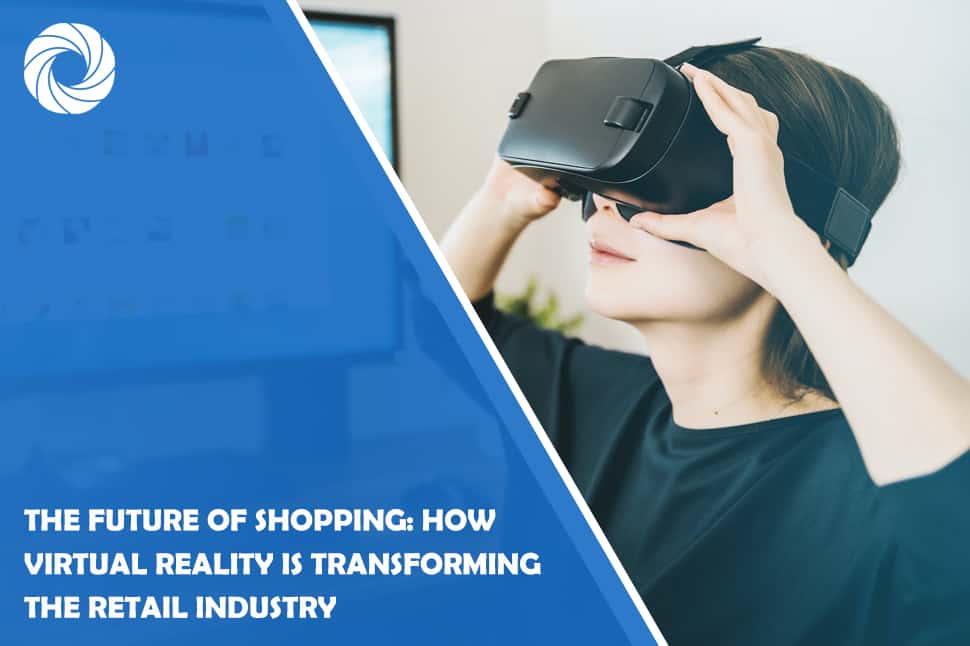Virtual reality (VR) is a game-changing technology that has been rapidly penetrating various sectors. It simulates an immersive environment, allowing users to interact with computer-generated simulations in a seemingly real-world setting. Using special VR equipment, such as headsets or gloves fitted with sensors, the user can explore and manipulate the virtual space.
The fusion of VR with retail operations is heralding a new era of consumer engagement. Businesses across the retail landscape are increasingly leveraging this technology, aiming to create more memorable and personalized shopping experiences. With the advent of virtual reality in ecommerce, understanding and implementing VR has become a pressing need for forward-thinking retailers.
VR as a Game-Changer in Retail
Creating Immersive Shopping Experiences
The true power of virtual reality lies in its capacity to create immersive environments that go beyond conventional retail experiences. With it, retailers can transport customers into captivating virtual stores that replicate or even surpass the allure of physical stores. The potential for virtual reality in shopping is enormous as it provides consumers with the thrill of shopping from the comfort of their homes, thereby enhancing customer engagement.
Facilitating Better Product Visualization
In addition to creating immersive environments, VR also assists in better product visualization. Unlike static images or videos, it offers customers a 3D view of products, enabling them to observe the item from all angles and assess the finer details. This ability to scrutinize products closely through this technology in shopping reduces uncertainty and drives informed purchase decisions.
Enabling Personalization in Retail
Another advantage of VR technology in retail is the level of personalization it offers. It can analyze consumer behavior in the virtual space and personalize their shopping experiences based on their preferences. This means that virtual shopping experiences can be tailored to individual tastes and needs, creating a more targeted and fulfilling shopping experience for each customer.
Strategic Insights: Implementing VR in Retail
Designing Effective User Interfaces
When integrating VR into retail operations, one crucial aspect to consider is the design of user interfaces. A well-designed interface is intuitive and easy to navigate, allowing customers to engage with the VR environment effortlessly. To ensure the experience is user-friendly, retailers must prioritize clear navigation, minimalistic design, and intuitive controls.
Managing Technology Adoption Challenges
Despite the immense potential of the technology, there are challenges in its implementation. The technology is still relatively new and requires a substantial investment in terms of equipment and software. Moreover, customers need to be educated about virtual reality technology, its use, and its benefits. To smoothen the adoption process, retailers should consider a phased implementation, gradually introducing features and offering customer guidance along the way.
Keeping Up with Changing Customer Expectations
In this rapidly evolving digital age, staying attuned to shifting customer expectations is of utmost importance. As virtual reality takes center stage, customers' demands for immersive retail experiences are poised to escalate. To meet these heightened expectations, retailers must constantly innovate and enhance their VR offerings. Keeping abreast of emerging VR technology trends is essential for survival and prosperity in the VR-driven retail industry. Staying proactive and adapting to the evolving landscape, retailers can not only meet but exceed customer expectations, paving the way for long-term success in the dynamic realm of VR retail.
Ensuring Privacy and Comfort in VR Retail Experiences
Maintaining Customer Data Privacy
With the enhanced personalization offered by VR comes the need to handle sensitive customer data. It is imperative for retailers to ensure that they implement stringent data privacy measures while designing VR experiences. Best practices and strategies for maintaining data privacy include collecting only essential data, using robust encryption methods, and providing clear communication about data collection and usage to customers.
Balancing Innovation and Customer Comfort
While the implementation of virtual reality in retail is undoubtedly innovative, it is essential to balance this innovation with customer comfort. Some customers may find these experiences overwhelming or discomforting. To ensure customer comfort, retailers need to incorporate options to adjust VR experiences based on individual comfort levels, such as controlling the intensity of the VR environment or offering alternatives for those who may find it challenging.
The Future of Retail with Virtual Reality
VR as an Investment in the Future of Retail
As we delve deeper into the age of digital transformation, virtual reality is emerging as an indispensable investment for the retail sector. With its ability to provide immersive, customized, and incredibly captivating shopping encounters, VR is revolutionizing the retail landscape. The impact of this technology on the future of the retail industry cannot be emphasized enough, as it holds the potential to redefine consumer experiences, boost sales, and create unique brand interactions. As businesses adapt to the ever-evolving technological advancements, integrating virtual reality into their retail strategies has become essential for staying competitive and meeting the growing expectations of tech-savvy consumers.
Preparing for a VR-Driven Retail Industry
As retailers gaze into the horizon, it becomes increasingly crucial to prepare for an industry propelled by virtual reality. While the implementation of such technology may appear formidable, considering the initial investment and complexities involved, the potential benefits in terms of amplified customer engagement and sales make it an opportunity too valuable to disregard. Looking forward, it becomes evident that VR shopping is poised to become an integral component of the retail experience, shaping and defining the industry for years to come. Retailers who embrace this technological advancement and incorporate VR seamlessly into their strategies will have a distinct competitive edge, offering customers immersive and unforgettable shopping journeys. Through recognizing the transformative power of VR and proactively adapting to the changing retail landscape, businesses can position themselves as leaders in the industry's future.
